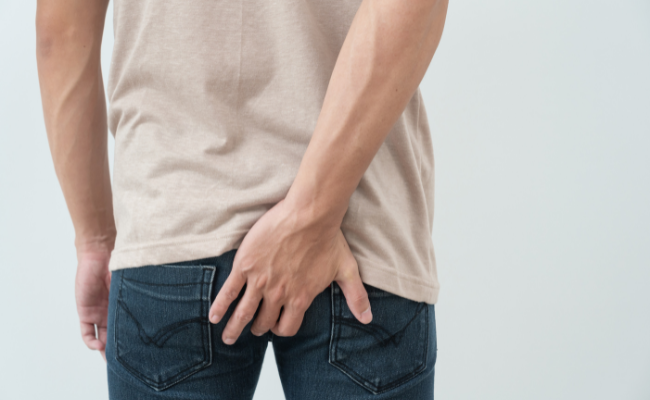How to Treat Pilonidal Sinus?
- October 27, 2023
- No Comments

What is Pilonidal Sinus?
Pilonidal sinus, a term that might seem trivial at first, describes a painful condition characterized by the emergence of a small tunnel or cyst near the tailbone, usually at the upper buttocks. The name itself, derived from Latin, signifies "nest of hair," shedding light on its origin. This ailment occurs when hair, skin debris, or foreign matter becomes ensnared in the buttock crevice, leading to the creation of a cyst or sinus.
Pilonidal sinuses frequently pose a source of discomfort and are susceptible to infection, primarily impacting a demographic, notably young adults, and more commonly, males. This prevalent cystic condition, known as a pilonidal cyst, manifests as a circular pouch filled with air or fluid, typically arising from a skin infection. Annually, over 70,000 cases are reported in the United States alone.
Why Does Pilonidal Sinus Occur?
Understanding the factors that contribute to the development of pilonidal sinus is crucial for effective treatment. While the precise cause remains elusive in some cases, several common factors are associated with its occurrence:
- Hair Growth: Excessive hair growth in the region is a primary contributor. The friction and pressure experienced in the buttock cleft can force hair into the skin, triggering the formation of cysts.
- Inactive Hair Follicles: Hair follicles that are not actively growing can become embedded in the skin, leading to the development of cysts. This is particularly common in the cleft between the buttocks.
- Congenital Factors: Some individuals may have a genetic predisposition to pilonidal sinus. Factors such as the structure of the buttock cleft or the presence of a dimple may contribute to the development of the condition.
How Does Pilonidal Sinus Manifest?
The symptoms associated with pilonidal sinus can range from discomfort to signs of infection:
- Pain and Tenderness: Individuals often experience pain and tenderness around the affected area, particularly when sitting or standing for extended periods.
- Swelling and Redness: Swelling and redness around the cyst or sinus opening are common indicators of an infection.
- Drainage of Pus or Blood: The sinus may discharge pus or blood, accompanied by a noticeable foul odor. This drainage is a clear sign of infection.
- Fever: In cases where infection is present, individuals may exhibit symptoms such as fever and general malaise.
Treatment Solutions for Pilonidal Sinus:
- Incision and Drainage: In cases of acute infection, a healthcare professional may opt for a minor surgical procedure to drain the cyst and remove any trapped hair or debris.
- Antibiotics: When infection is present, a course of antibiotics may be prescribed to combat bacterial growth and reduce inflammation.
- Lifestyle Modifications: Maintaining proper hygiene is essential. Keeping the area clean and dry, avoiding prolonged sitting, especially on hard surfaces, and practicing good personal hygiene are crucial to prevent recurrence.
- Shaving or Hair Removal: Regular shaving or hair removal in the affected area may assist in preventing hair from penetrating the skin, thereby reducing the risk of recurrence.
- Laser Hair Removal: In some cases, healthcare professionals may recommend laser hair removal to diminish hair growth in the affected area, minimizing the chances of pilonidal sinus reappearance.
Benefits of Treating Pilonidal Sinus:
- Pain Relief: The foremost benefit of effective treatment is the relief from pain and discomfort associated with pilonidal sinus. This enables individuals to resume their regular activities without hindrance.
- Prevention of Recurrence: Proper management, including lifestyle modifications and hair removal strategies, significantly reduces the likelihood of pilonidal sinus recurrence.
- Avoidance of Complications: Timely and appropriate treatment prevents the progression of the condition to more severe infections or abscess formation, minimizing the risk of complications.
- Improved Quality of Life: By addressing both the symptoms and causes of pilonidal sinus, individuals experience an improved quality of life, free from the discomfort and pain associated with the condition.
- Minimization of Infection Risk: Swift and appropriate treatment reduces the risk of infection, preventing the spread of bacteria and minimizing the need for more extensive interventions.
Comments (0)